What are the different types of cut you can make with a router? |
||||
 |
||||
|
Routing power tools are particularly versatile woodworking tools, especially due to the huge array of different bits, cutters, templates and other accessories that can be used with them. Here are some of the shapes you can make: |
||||
What is a groove? |
||||
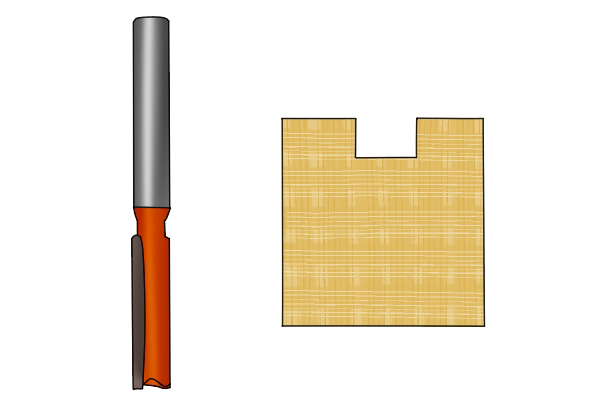 |
A groove is a long cut that's made in the surface of a material. Grooves can be flat-bottomed, V-shaped, or rounded.
|
|||
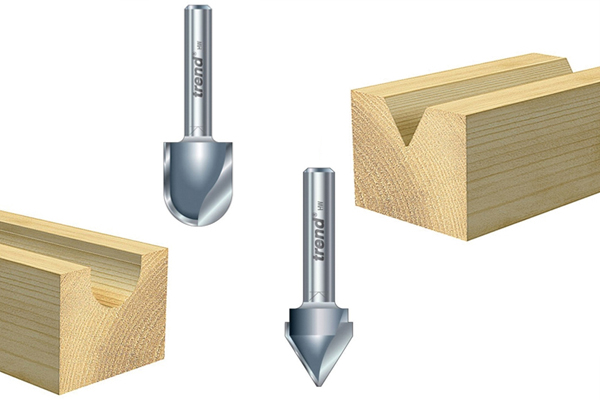 |
V-groove bits make V-shaped grooves.
Round nose or cove bits make rounded grooves.  |
|||
What is a cove? |
||||
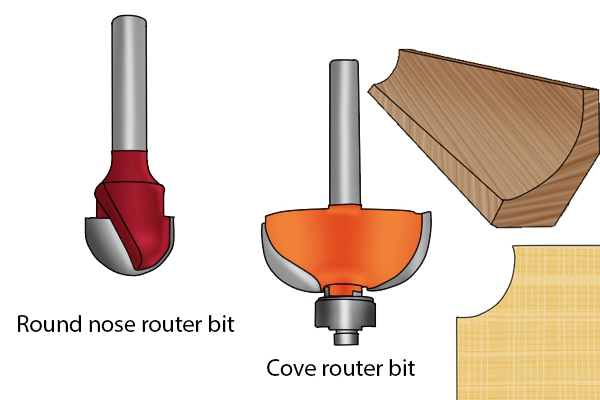 |
A cove is the name given to a rounded groove made on the edge of a material. Cove cuts are often used to produce decorative fluting in woodwork.
A cove cut can be made using a cove or round nose router bit, as well as many of the radius bits. |
|||
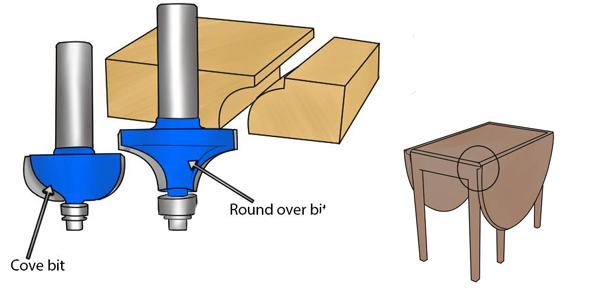 |
Coves are commonly used in conjunction with round over cuts, in order to make drop-leaf table joints. |
|||
What is a rebate? |
||||
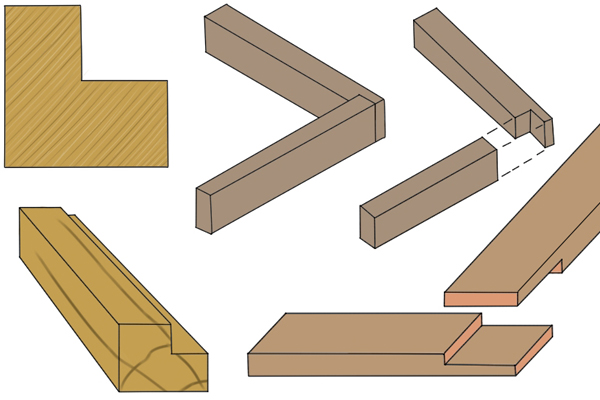 |
A rebate is a 90-degree groove cut along the edge of a piece of material that's mostly used in joint-making, particularly in the construction of lap joints.
A lap joint is made by cutting a rebate on the end of two pieces of material. The two pieces are then overlapped, and the rebates fastened together to make a secure joint. |
|||
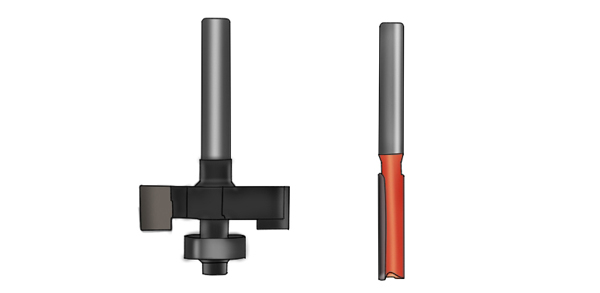 |
A rebate can be cut with a straight or rebate router bit.  |
|||
What is veining? |
||||
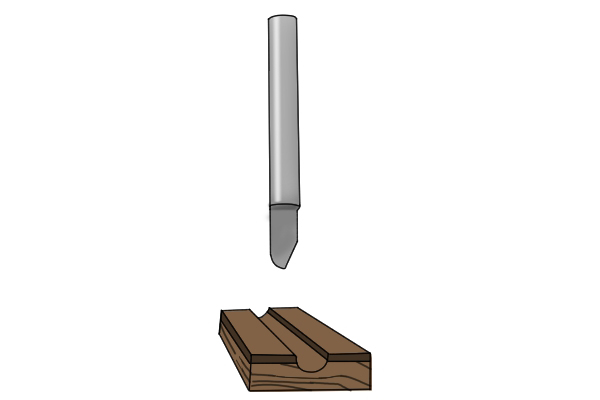 |
Veining is the process of making very thin straight or curved cuts in the surface of wood or other materials to produce a variety of shapes and patterns.
The bottom of the grooves is usually rounded, like veins. |
|||
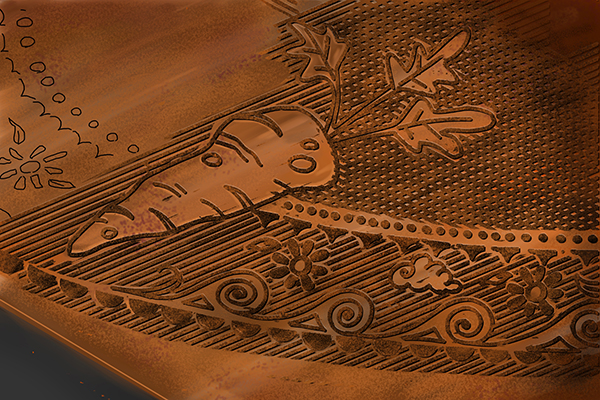 |
Isn't that the same as engraving?No, engraving can be done with a router bit, but it involves removing much less material by scratching or etching the surface, rather than making the deeper cuts associated with veining. |
|||
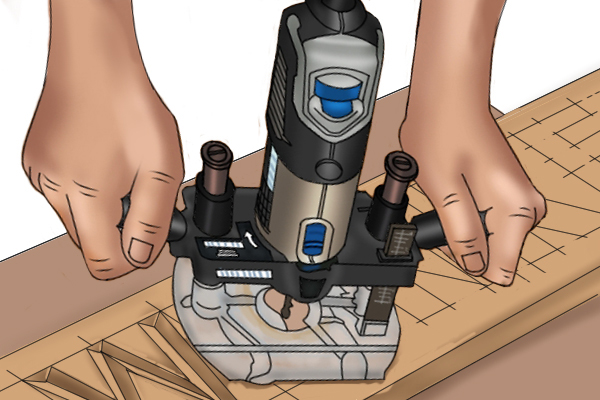 |
Veining is most commonly used for lettering and numbering applications, with the aid of a guide bush and appropriate template.
It is usually done with a very thin V-groove or round nose router bit. There are also panel veining cutters available. |
|||
What is a chamfer? |
||||
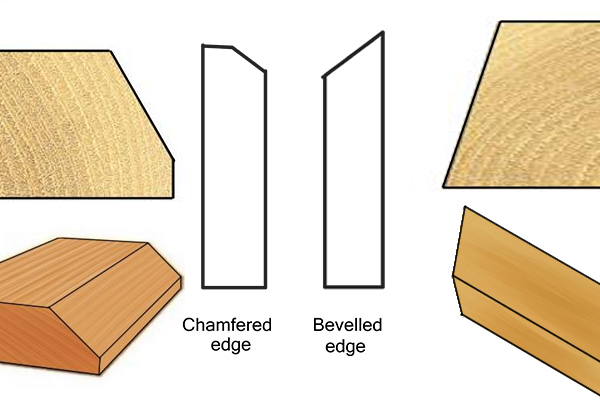 |
A chamfer is an angled cut made across the corner of a material, to remove the 90-degree edge. It is similar to a bevel cut, but does not extend across the entire profile of the material, instead, it creates a flattened corner. Chamfer and bevel router bits both look similar to each other, and can occasionally be used interchangeably. |
|||
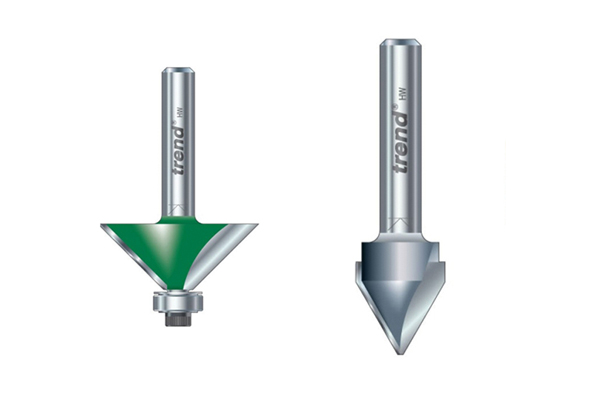 |
A chamfer cut can be made using a V-groove or chamfer router bit. Bevel bits can also make chamfers, but the angle of these bits is likely to be different to chamfer cutters.
A chamfer cut is often made when constructing a mitre joint. This involves making a 45-degree chamfer along the edge of two pieces of material and then attaching them to form a 90-degree corner. A mitre joint is often used to make picture frames. |
|||
 |
||||
What is beading? |
||||
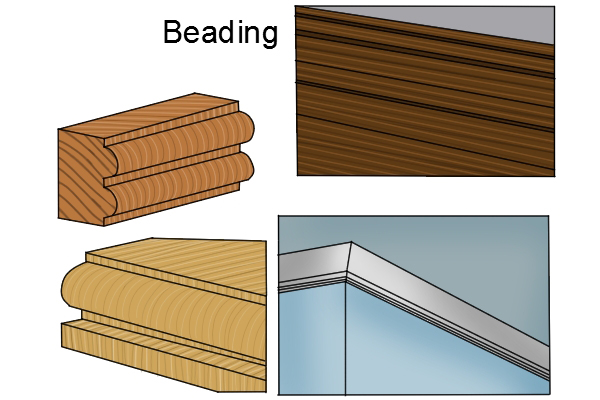 |
A bead is a decorative woodworking feature which comes in strips, similar in appearance to a moulding. Although they look very similar, there are several differences between the two.
Beading is usually made of wood, whereas a mould is often made from plaster or plastic, as well as wood. |
|||
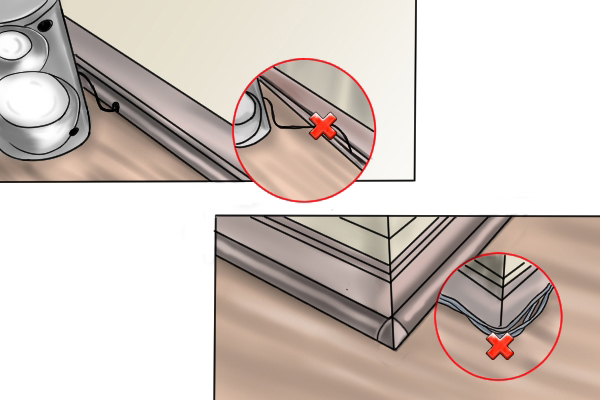 |
The shapes created on beads are usually less complex than those on moulds.
Beading usually consists of rounded edges of different sizes, in the style of a string of beads, hence the name. The term reed is sometimes used for beading with two or more curves in its profile. |
|||
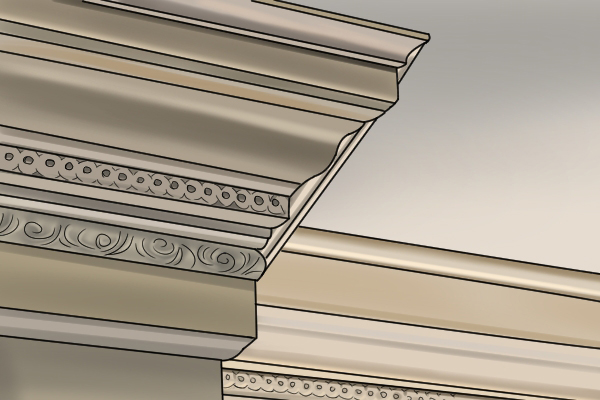 |
Another difference between the two is that a bead is most commonly used for practical reasons, such as to hide cables or wires, or to conceal the joint between two materials. Beads are often used to cover the seam where a wall meets a floor. However, they can also be used around the inside edge of window frames. This creates a more pleasing finish between the glass and the frame.
Although a mould can also be used in this way, because of its more elaborate design, it is usually used as a purely decorative feature. |
|||
What is moulding? |
||||
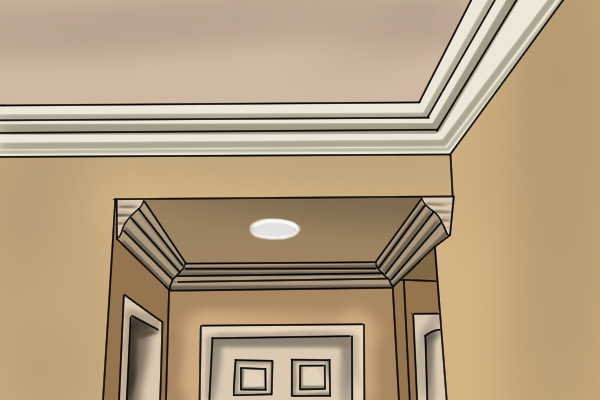 |
A mould is a building feature used for both decorative and practical purposes, although its main function is usually mainly decorative. It is usually used in the form of strips of material, usually made from wood or plaster, and sometimes plastic. The face of a mould is commonly shaped to create an attractive finish. |
|||
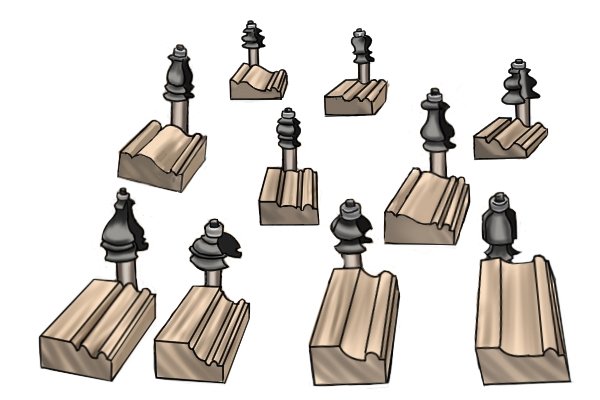 |
There are many different types of mould. The design can be very simple, and used to conceal cables or wires. This is very similar to a bead. Or it can be very elaborate, and purely decorative.
A moulding router bit is used to create the elaborate shapes characteristic of moulding. |
|||
 |
||||







